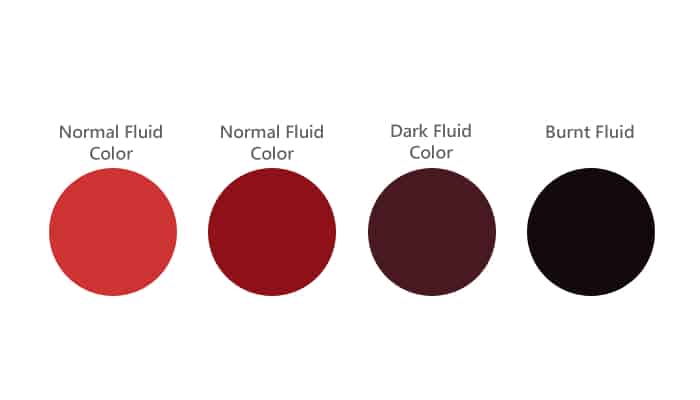Understanding Transmission Fluid for Your Isuzu NPR
When it comes to keeping your Isuzu NPR running smoothly, one of the most critical components to pay attention to is the transmission fluid. The right type of fluid not only ensures optimal performance but also prolongs the life of your transmission. Let’s dive into what you need to know about the transmission fluid for your 2013 Isuzu NPR.
Manufacturer’s Recommendations
| Popular posts |
|---|
| What to do to prolong the life of your manual gearbox |
| Automatic transmission: what it is, how it works |
Isuzu has specific recommendations for the type of transmission fluid that should be used in the 2013 NPR. According to the manufacturer, the correct fluid type is important for maintaining the integrity and functionality of the transmission system.
Fluid Type
For the 2013 Isuzu NPR, the recommended transmission fluid is:
– Isuzu Genuine ATF: This is a specialized automatic transmission fluid designed to meet the unique requirements of Isuzu vehicles. It contains additives that help reduce wear and tear on transmission components, ensuring smoother shifting and better overall performance.
It’s crucial to avoid using generic fluids or those not specifically designed for your vehicle. Using the wrong type of fluid can lead to poor performance, increased wear, and even catastrophic transmission failure.
Specifications
When selecting transmission fluid, it’s essential to consider the specifications that align with Isuzu’s recommendations. Here are some key specifications to keep in mind:
- Viscosity: The fluid should have a viscosity rating that meets or exceeds the manufacturer’s requirements. Typically, this is around 5W-30 for automatic transmission fluids.
- Performance Standards: Look for fluids that meet or exceed the Dexron III or Dexron VI standards, as these are commonly compatible with Isuzu transmissions.
- Additives: Ensure that the fluid contains anti-wear additives and friction modifiers to enhance performance and longevity.
Why It Matters
Using the correct transmission fluid is not just a suggestion; it’s a necessity. Here’s why:
- Optimal Performance: The right fluid ensures that your transmission operates smoothly, providing seamless gear shifts and better responsiveness.
- Longevity: Quality transmission fluid helps protect internal components from wear and tear, extending the life of your transmission.
- Prevention of Overheating: The right fluid helps dissipate heat, preventing overheating and potential damage to your transmission.
In summary, when it comes to your 2013 Isuzu NPR, don’t skimp on the transmission fluid. Stick to Isuzu’s recommendations for the best performance and longevity of your vehicle. Always consult your owner’s manual or a trusted mechanic if you’re unsure about which fluid to use.
Recommended Oil Brands for Your Isuzu NPR Transmission Fluid
When it comes to keeping your 2013 Isuzu NPR in top shape, using the right transmission fluid is crucial. While Isuzu recommends their Genuine ATF, many owners and mechanics have shared their experiences and preferences regarding various oil brands that work well with this model. Let’s explore some of the most recommended oil brands based on owner feedback and forum discussions.
Popular Brands Among Isuzu NPR Owners
Based on numerous discussions across automotive forums and owner feedback, several brands have emerged as favorites among Isuzu NPR owners. Here’s a rundown of the most recommended options:
- Mobil 1: Known for its high-quality synthetic oils, Mobil 1 ATF is frequently mentioned by owners for its excellent performance in Isuzu transmissions. Users report smoother shifts and improved responsiveness, making it a popular choice.
- Valvoline: Valvoline’s DEXRON VI ATF is another well-regarded option. Many users appreciate its affordability and effectiveness, noting that it meets the necessary specifications for Isuzu vehicles.
- Castrol: Castrol Transmax ATF is often recommended for its high-performance capabilities. Owners have noted that it provides excellent protection and maintains its viscosity under high temperatures.
- Amsoil: For those looking for a premium option, Amsoil Synthetic ATF is frequently praised for its longevity and superior performance. Users have reported extended intervals between changes and reduced wear on transmission components.
- Royal Purple: Known for its high-performance lubricants, Royal Purple Max ATF is another brand that has garnered positive feedback. Owners appreciate its ability to improve shifting performance and reduce heat buildup.
Owner Experiences and Feedback
The experiences shared by owners can provide valuable insights into which brands perform best in real-world conditions. Here are some common themes and feedback from Isuzu NPR owners regarding their preferred transmission fluids:
- Performance: Many owners have reported noticeable improvements in shifting performance when using high-quality synthetic fluids like Mobil 1 and Amsoil. Smooth transitions between gears and quicker response times are frequently mentioned.
- Temperature Control: Several users have noted that premium fluids, such as Royal Purple and Castrol, help maintain lower transmission temperatures, especially during heavy towing or in hot climates. This can be crucial for preventing overheating and extending transmission life.
- Longevity: Owners using synthetic fluids often report longer intervals between fluid changes. Many have found that switching to a synthetic option like Valvoline or Amsoil has allowed them to go longer without experiencing issues.
- Cost vs. Quality: While some owners prefer premium brands, others have found that mid-range options like Valvoline provide excellent performance without breaking the bank. This balance of cost and quality is a common consideration among NPR owners.
What to Avoid
While there are many great options out there, some fluids have received negative feedback from Isuzu NPR owners. Here are a few things to watch out for:
- Avoid generic or off-brand fluids that do not specify compatibility with DEXRON III or DEXRON VI standards. Many owners have reported poor performance and increased wear when using these types of fluids.
- Be cautious with fluids that claim to be “universal.” While they may seem convenient, they often do not meet the specific requirements needed for Isuzu transmissions.
In summary, when selecting transmission fluid for your 2013 Isuzu NPR, consider the experiences and recommendations of fellow owners. Brands like Mobil 1, Valvoline, and Amsoil have proven to be reliable choices that can enhance your vehicle’s performance and longevity. Always ensure that the fluid you choose meets the necessary specifications for your transmission to keep it running smoothly.
Change Interval for Your Isuzu NPR Transmission Fluid
Maintaining the right change interval for your transmission fluid is essential for the longevity and performance of your 2013 Isuzu NPR. While the manufacturer may provide a general guideline, real-world experiences and statistical data can help you determine the best practices for your specific driving conditions.
Recommended Change Intervals
For the 2013 Isuzu NPR, the recommended change interval for the transmission fluid typically falls within the following ranges:
- Miles: 30,000 to 60,000 miles (approximately 48,000 to 96,000 km)
- Kilometers: 48,000 to 96,000 km
These intervals can vary based on driving conditions, such as heavy towing, frequent stop-and-go traffic, or extreme temperatures. If you regularly engage in any of these activities, it may be wise to consider changing your transmission fluid more frequently.
Partial Transmission Oil Changes
In many cases, a full transmission fluid change requires removing the transmission from the vehicle, which can be a labor-intensive and costly process. As a result, many owners opt for partial transmission oil changes, which can be performed more easily and frequently.
What is a Partial Change?
A partial transmission oil change involves draining a portion of the old fluid and replacing it with new fluid. This method can help maintain fluid quality without the need for a complete fluid replacement. Here’s how it typically works:
- Drain and Replace: A portion of the old fluid is drained, usually around 3 to 5 quarts (approximately 2.8 to 4.7 liters), depending on the transmission design.
- Add New Fluid: Fresh transmission fluid is added to replace the drained amount, mixing with the remaining old fluid.
Benefits of Partial Changes
There are several advantages to opting for partial transmission oil changes:
- Cost-Effective: Partial changes are generally less expensive than full fluid replacements, making them a more budget-friendly option for regular maintenance.
- Less Downtime: Since partial changes require less labor, your vehicle will spend less time in the shop, allowing you to get back on the road sooner.
- Improved Fluid Quality: Regular partial changes can help maintain better fluid quality over time, reducing the buildup of contaminants and prolonging the life of your transmission.
Statistical Data and Authoritative Sources
According to the Automatic Transmission Service Group (ATSG), regular maintenance, including fluid changes, is critical for the longevity of automatic transmissions. They recommend that transmission fluid be changed every 30,000 to 60,000 miles, depending on driving conditions.
Additionally, a study published by the Society of Automotive Engineers (SAE) indicates that maintaining clean transmission fluid can significantly reduce wear on transmission components, which is crucial for preventing costly repairs down the line.
In summary, while the recommended change interval for your Isuzu NPR’s transmission fluid is between 30,000 and 60,000 miles, considering partial changes can be an effective way to maintain fluid quality without the need for a full fluid replacement. Always consult your owner’s manual and consider your driving habits when determining the best maintenance schedule for your vehicle.
What Color Should Transmission Fluid Be?


